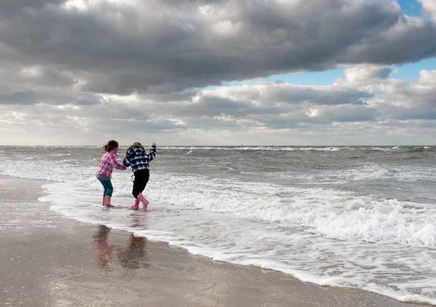European Marine Strategy Framework Directive
The European Marine Strategy Framework Directive (MSFD), published in 2008, aims to protect the good status of the marine environment in European seas and oceans and, where necessary, restore it. It is particularly significant that this target has been set at European level. Marine ecosystems, the conditions imposed on them and the forces that have an impact on them, cross many national boundaries. The same applies to many use functions and the effects they have on the marine environment.

Operation of the MSFD
Under the terms of the MSFD, each EU member state must establish a marine strategy for its own maritime area. This strategy must focus on protecting, maintaining and restoring the marine environment (to the level of good environmental status), while also safeguarding sustainable use of the North Sea. The member states must take the necessary steps to achieve this ambition in their marine waters. In that respect, they must work together, both with EU member states and with other countries in their marine region. The framework directive recommends that they use existing regional maritime conventions and treaties.
The MSFD requires member states to:
• list and assess what the current environmental status is in the state's own maritime area, using the MSFD's 'descriptors of GES'
• set targets and take the necessary measures to restore and maintain good environmental status
• draft a monitoring programme to be able to follow how the marine environment develops and what effects the measures taken achieve
• transpose the requirements of the MSFD into national legislation
• report regularly to Brussels on all aspects relating to the directive.
Marine Strategy for the Dutch section of the North Sea
The Netherlands incorporated the effect of the directive in 2010 into the Water Decree, pursuant to the Water Act.
The Dutch Marine Strategy for the North Sea is made up of three parts that were published at intervals of two years. Each part runs for six years, after which it is updated.
1. Marine Strategy Part 1 (2018-2024) (pdf, 720 kB), describes the current environmental status, what constitutes good environmental status, environmental targets, descriptors and indicators.
2. Marine Strategy part 2 (2020-2026) (pdf, 3.1 MB), sets out the MSFD monitoring programme and explains how the Netherlands monitors progress.
3. Marine Strategy part 3 (2022-2027) (pdf, 25 MB) sets out a programme of measures drawn up by the Netherlands for achieving good environmental status. This document is an appendix to the North Sea Programme 2022-2027 (pdf, 25 MB).
Cooperation within marine regions
The MSFD specifies European marine regions in which member states must cooperate with each other, preferably using regional maritime conventions where possible. Each member state must draft a marine strategy for its own maritime area that also relates to the marine region to which its area belongs, regardless of national borders. This is also, implicitly, a step towards the required cooperation. Countries that share borders work out how to cooperate, something which applies at all levels in principle. It is of great importance that there is scientific consensus on the indicators shown in the monitoring programme for each country under the eleven 'descriptors' as to whether or not 'good environmental status' has been achieved. For some 'descriptors' not (enough) indicators are, as yet, available or they are still in development. The partners within a marine region consult on this within the OSPAR framework.
The text of the MSFD can be found on EUR-Lex, the website for EU law.